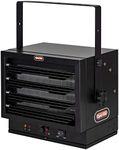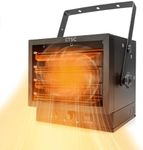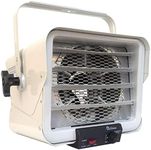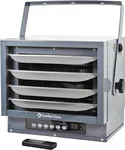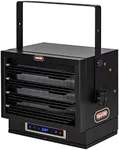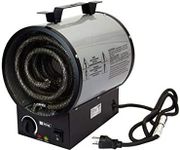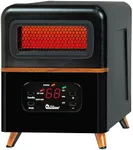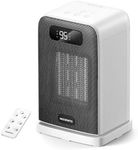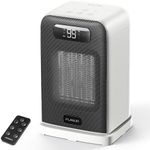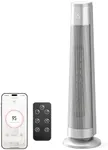Buying Guide for the Best Electric Garage Heaters
Choosing the right electric garage heater is all about matching the heater’s capabilities to your garage’s size, insulation, and how you plan to use the space. Think about how cold it gets in your area, how often you’ll be in the garage, and whether you need quick bursts of heat or steady warmth over long periods. Understanding the main features and specifications will help you find a heater that keeps your garage comfortable and safe.Heating Power (Wattage or BTUs)Heating power tells you how much heat the unit can produce, usually measured in watts or BTUs (British Thermal Units). This is important because it determines how effectively the heater can warm up your garage. Smaller garages or well-insulated spaces may only need a lower wattage (around 1500-3000 watts), while larger or poorly insulated garages might require more powerful units (4000 watts and above). To pick the right one, consider your garage’s size and insulation—bigger, draftier spaces need more power to stay warm.
Heating Type (Fan-Forced, Radiant, Infrared)The heating type describes how the heater delivers warmth. Fan-forced heaters blow warm air around, which heats up the whole space quickly and evenly—good for general use. Radiant and infrared heaters warm up objects and people directly, rather than the air, making them ideal if you’ll be working in one spot for long periods. If you want to heat the whole garage, go for fan-forced; if you just need a warm workspace, radiant or infrared might be better.
Mounting Style (Portable, Wall/Ceiling Mounted)Mounting style refers to how and where the heater is installed. Portable heaters can be moved around and are great if you want flexibility or only need heat occasionally. Wall or ceiling-mounted heaters are fixed in place, saving floor space and providing more permanent, even heating—ideal for regular use or if you want to keep the heater out of the way. Choose based on how often you’ll use the heater and how much space you have.
Thermostat and ControlsA thermostat lets you set and maintain a specific temperature, while controls can include timers, remote controls, or multiple heat settings. These features are important for comfort and energy efficiency, as they help prevent overheating and wasted electricity. If you want to set it and forget it, look for a heater with a built-in thermostat and easy-to-use controls. If you prefer manual control or only use the heater occasionally, simpler models may be enough.
Safety FeaturesSafety features like overheat protection, tip-over switches, and cool-touch exteriors are crucial, especially in a garage where flammable materials or pets might be present. Overheat protection shuts the heater off if it gets too hot, while tip-over switches turn it off if it falls over. Cool-touch exteriors prevent burns. Always prioritize safety features, especially if your garage is used for storage or as a workspace.
Power Source and Electrical RequirementsElectric garage heaters need to be plugged in, but some require a standard household outlet (120V), while more powerful models need a 240V outlet. This is important because not all garages have the wiring for high-voltage heaters. Check your garage’s electrical setup before buying. If you have standard outlets, stick to lower-wattage heaters; if you need more heat and have the right wiring, a 240V heater can be more effective.
Noise LevelSome heaters, especially fan-forced models, can be noisy. If you’ll be working in the garage for long periods or want a quiet environment, look for heaters that are specifically described as quiet or have noise ratings. Radiant and infrared heaters are usually quieter since they don’t use fans. Consider your tolerance for noise and how you’ll use the space when making your choice.
